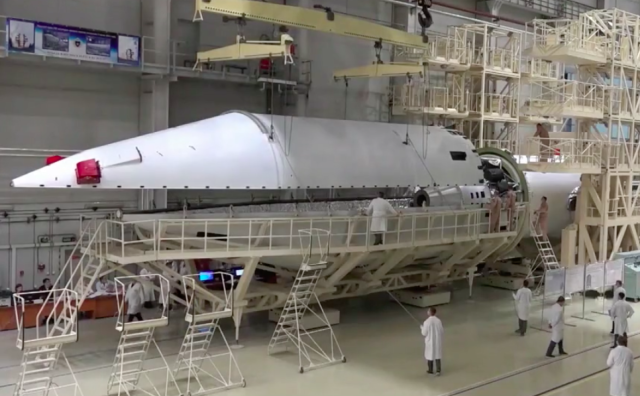The new Russian upper stage Perseus, which could not, as planned, put the payload layout into geostationary orbit, will enter the dense layers of the atmosphere on the night of January 6, follows from the website data Space-track.org, where the parameters of the orbits of spacecraft assembled by the US military are published.
The Angara-A5 heavy launch vehicle with a Perseus upper stage and a satellite mock-up took off from the Plesetsk cosmodrome on December 27, 2021. This was the third launch of the carrier: for the first time the heavy "Angara" was launched in 2014, and for the second time - last December. All launches were carried out from Plesetsk, since only there is a launch pad for this type of rocket. At Vostochny, the launch complex for Angara is still under construction.
The current launch was the first for the new Perseus upper stage, created at RSC Energia. This is an upgraded version of the DM block, which, along with the Breeze, was used on Proton-M missiles. The upper stages are necessary for the launch of satellites from low Earth orbit on departure trajectories to other planets or to a geostationary orbit with a height of 36 thousand kilometers. Perseus received a new control system and a pneumohydraulic system, as well as enlarged fuel tanks.
The Angara launch vehicle worked normally, and 12 minutes after launch, Perseus separated from the third stage of the launch vehicle with a mock-up of the payload. Next, Perseus was supposed to put the mock-up of the satellite into geostationary orbit according to a typical nine-hour three-pulse scheme with four turns of the main engine.
However, according to Space-track.org, the upper stage, together with the layout, was in low Earth orbit with a perigee height of 177 kilometers and an apogee of 200 kilometers. Now the US military is tracking four objects in orbit after the launch of the Angara: the upper stage itself with a layout (catalog number NORAD 50505) and three other small fragments of space debris.
As of Wednesday morning, the altitude of the orbit of object 50505 has significantly decreased: the perigee is 136 kilometers, the apogee is 150 kilometers. According to the forecast of the US military, Perseus with a mock-up will enter the dense layers of the atmosphere at 20:07 GMT on January 5 (23:07 Moscow time), the uncertainty is 180 minutes.
Earlier we talked about how at the end of December 2021, the Russian inspector satellite Kosmos-2519 descended from orbit . Read more about the threats that spent satellites and rocket stages can create in our material "Garbage Belt" .
Sergey Kuznetsov

